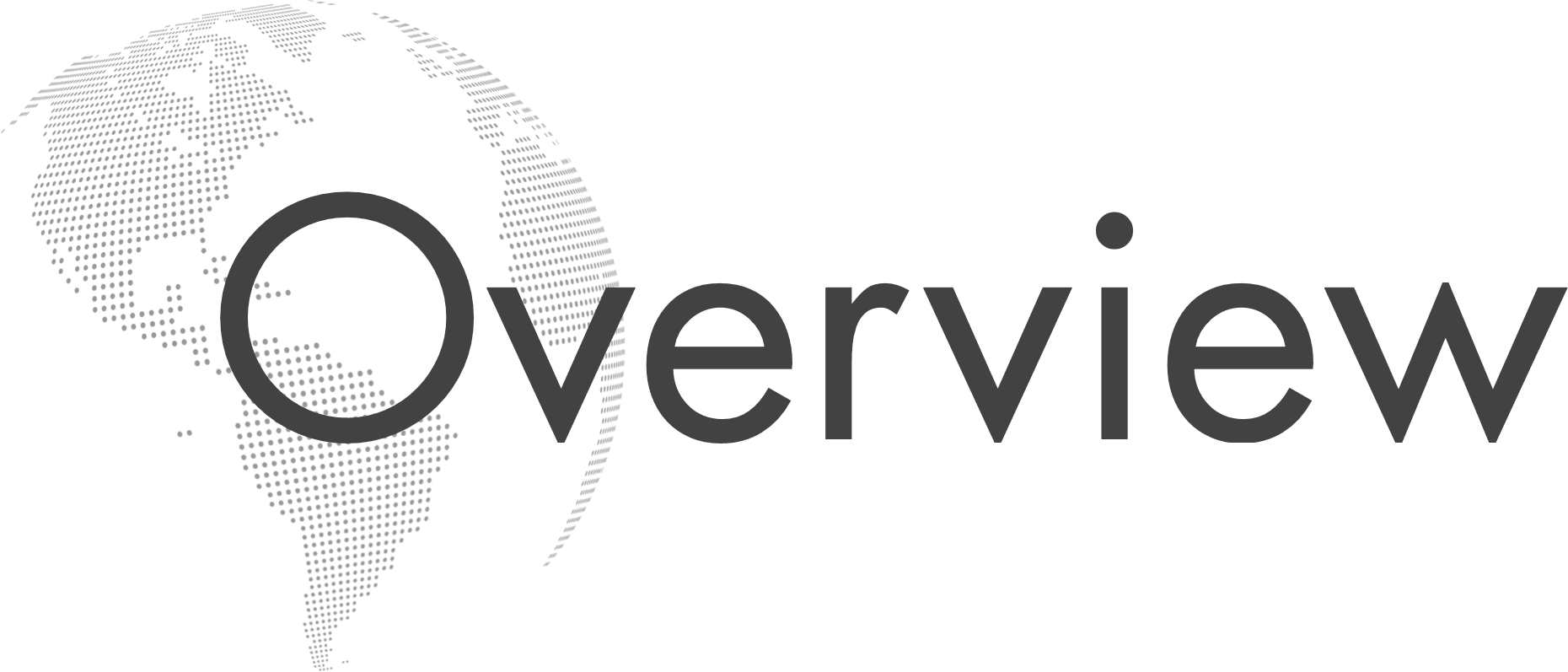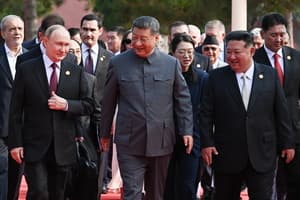Kim bets on China, Russia to boost his leverage abroad, secure lifelines at home, say observers

In a spectacle unseen since the Cold War, the leaders of China, Russia and North Korea stood shoulder to shoulder on Tiananmen’s rostrum in Beijing on Wednesday, watching a parade that showcased China’s strategic weapons, including missiles capable of striking the United States.
For North Korean leader Kim Jong-un, the spectacle was far more than a symbolic debut on the multilateral stage.
Kim’s presence, observers noted, reflects North Korea’s recalibrated grand strategy to elevate Pyongyang’s standing and leverage abroad in response to a rapidly shifting global order, while tightening his grip at home ahead of key anniversaries, including the Oct. 10 celebration of the party’s 80th founding anniversary.
The crux of the strategy is to secure backing from China and Russia to gain the upper hand in potential nuclear negotiations with the United States, restore vital economic lifelines from Beijing, and hedge against the risks of overreliance on Moscow amid growing speculation about an eventual end to the war in Ukraine.
While striding down the red carpet toward the Tiananmen rostrum, Xi led the way with Putin on his right and Kim on his left — the three leaders moving in step, their brief exchanges captured by cameras and broadcast live to audiences around the world.
At the reviewing stand, Xi claimed the central seat, flanked by Kim on one side and Putin on the other, a tableau of unity not seen since the Cold War.
Xi and Kim leaned in toward one another, speaking animatedly — another image carried live across global networks during the military parade marking the 80th anniversary of the end of World War II following Japan's surrender.
Later that day, the three leaders walked side by side into the Sept. 3 “Victory Day” reception at Beijing’s Great Hall of the People.
“The meeting of the three leaders has effectively laid the groundwork for a North Korea-China-Russia bloc to counter South Korea-US-Japan security cooperation,” Doo Jin-ho, director of the Eurasia Research Center at the Korea Research Institute for National Strategy, told The Korea Herald.
“The US-South Korea-Japan security cooperation, for instance, through the Camp David summit and declaration, has been institutionalized. Even without such institutionalization, this has raised the curtain (for the era of North Korea-China-Russia bloc), and it appears that necessary steps will follow.”
Cheong Seong-chang, vice president of the Sejong Institute in Seoul, underscored the symbolism of Beijing’s exceptional treatment of Kim, elevating him above nearly all of the 26 foreign heads of state present.
“Kim Jong-un received the second-most important treatment in protocol, after President Putin. This can be interpreted as North Korea having been treated by China as a 'de facto nuclear weapons state,’” Cheong told The Korea Herald.
“Kim Jong-un’s successful debut on the multilateral diplomatic stage is viewed as a prelude to more proactive engagement in restoring North Korea-China relations and deepening trilateral solidarity with China and Russia.”
When North Korea’s founder, Kim Il-sung, stood on the same Tiananmen rostrum in 1959 for the People's Republic of China’s 10th anniversary founding celebrations, he was placed further away from then-Chinese leader Mao Zedong, who was positioned between Soviet First Secretary Nikita Khrushchev and Vietnamese President Ho Chi Minh.

Kim's strategic calculus
Beneath the spectacle of Kim’s appearance at China’s high-profile 80th anniversary celebrations rests North Korea’s broader foreign policy strategy.
In a nutshell, Pyongyang is striving to move beyond the confines of the Korean Peninsula, to raise its strategic value in today’s great-power rivalry by aligning itself more closely with China and Russia — and, in doing so, to gain greater leverage over the US.
Cha Du-hyeogn, vice president of the Asan Institute for Policy Studies in Seoul, said Kim’s presence alongside the Chinese and Russian leaders “highlighted North Korea’s bid to play a regional role.”
Cha pointed to Kim’s remarks at the April launch of the 5,000-ton destroyer Choe Hyon at Nampo Shipyard, where he announced plans to build a blue-water fleet capable of operating beyond the coastal waters of the Korean Peninsula. This vision underscored Pyongyang’s intent to assert a regional role beyond the peninsula — a trend also evident in North Korea’s dispatch of troops to support Russia’s war in Ukraine.
“Through this, North Korea seeks to increase its strategic value to its longstanding partners in the region, China and Russia,” Cha told The Korea Herald.
According to Cha, “North Korea seems to believe that having a firm alliance on one side is actually advantageous in negotiations with the US.”
“North Korea views strengthening its alliance with Russia and ties with Beijing not as an obstacle to relations with the US but, rather, as a way to spur Washington’s interest in negotiations.”
Kwak Gil-sup, the head of One Korea Center, a website specializing in North Korea affairs, said, “The photographs of Kim, Xi, and Putin together have the effect of sending a pressure message to Trump that China and Russia stand behind North Korea.”
“This allows Kim Jong-un to respond to Trump’s proposals for dialogue with greater composure,” Kwak, a former analyst at the National Intelligence Service, told The Korea Herald.

Doo explained that Kim’s decision to stand in lockstep with Xi and Putin reflected his bid to take control of the uncertainty surrounding North Korea’s future.
“Kim is trying to eliminate and manage uncertainty on North Korea’s terms. That uncertainty arises from the eventual end of Russia’s war and from doubts in the West about whether North Korea would be abandoned once the war is over,” Doo said.
“I see this as Kim’s determination to manage those risks proactively. And President Putin, to some extent, has acquiesced — he could scarcely do otherwise.”
Kim and Putin separately met on Wednesday at Beijing’s Diaoyutai State Guesthouse, opening with Putin’s expression of gratitude for the sacrifice of North Korean soldiers in the Kursk region, according to the Kremlin. Putin also invited Kim to visit Russia.
Kwak also noted that Kim “seeks to restore ties with China, which have cooled amid strengthened North Korea-Russia cooperation through troop dispatches for Russia.”
There are also domestic factors driving the need to restore relations with China.
“Kim Jong-un is assessed to have decided to attend China’s Victory Day military parade to ease public discontent over soaring rice prices and, among other reasons, to secure economic assistance from Beijing ahead of the party’s 80th founding anniversary on Oct. 10 and the anticipated ninth Party Congress early next year,” Cheong said.
At a deeper level, Cha described Pyongyang’s current strategy as harnessing a Cold War-style structure of great-power rivalry — a reversal of the isolation it endured in the late 1980s and early 1990s at the end of the Cold War.
“From a grand strategy perspective, North Korea does not view this kind of Cold War-like alignment as a disadvantage,” Cha told The Korea Herald.
During the period, North Korea became marginalized as its networks in Eastern Europe collapsed, followed by South Korea’s establishment of diplomatic relations with both China and Russia.
“Much like (South Korea’s) past Northern Diplomacy, North Korea now seeks to keep the door to dialogue with the United States ajar while broadening its footprint through a wider network of states aligned with China and Russia,” Cha said. “That is the strategic calculation we see unfolding.”

